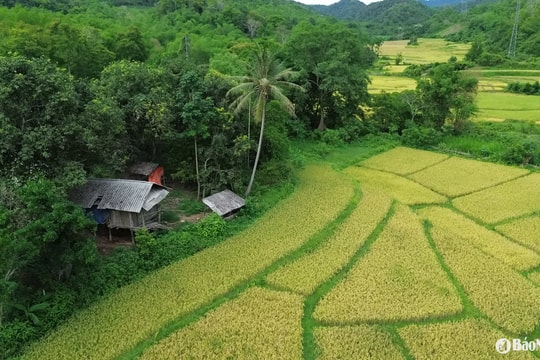Some initial thoughts on economic development in Western Nghe An
To exploit and promote the economic strengths of the Western region, there needs to be scientific, synchronous, practical solutions suitable for the market economy and international integration in the direction of socialism.

Duc Hau• October 21, 2025
The 20th Congress of the Nghe An Provincial Party Committee for the 2025-2030 term was a great success. The most important and difficult issue is to organize the implementation of the resolution to effectively implement the main goals and targets that the Congress has decided. Among those targets are: The growth rate of products in the province (GRDP) reaches 12% or more, the average GRDP per capita reaches about 165 - 190 million VND, the state budget revenue in the area increases by an average of 12% or more... requiring all levels, sectors, the entire political system and each cadre, party member and citizen to have high political determination, to take drastic action on the basis of specific plans and projects right from the first days of the term.
Over the past 5 years, the Party Committee, government and people in the province have focused on exploiting and attracting investment, achieving many socio-economic results in the eastern region of the province. Investment projects have basically filled the Southeast Economic Zone, VSIP Nghe An 1 and now VSIP Nghe An 2 and 3 are showing many improvements.

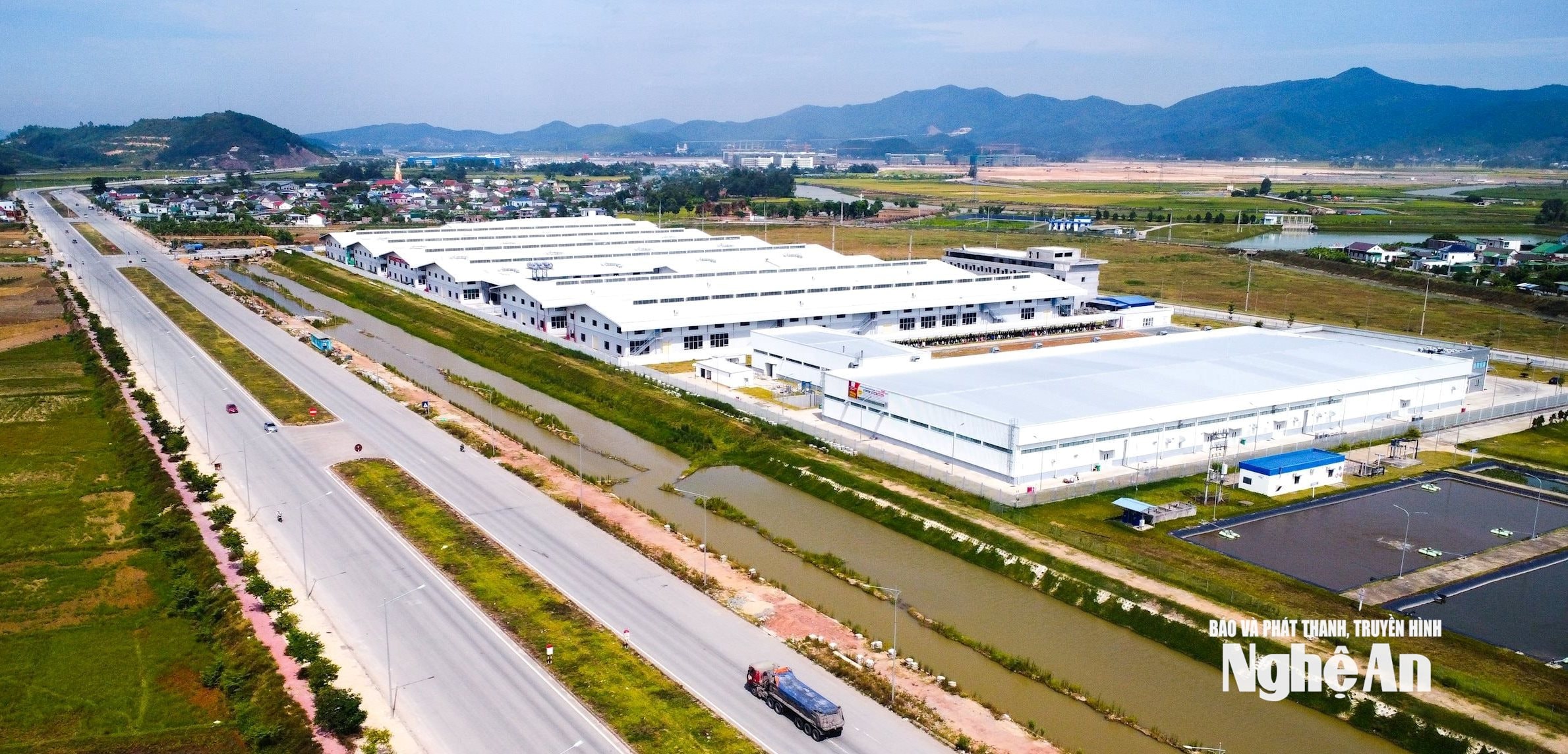
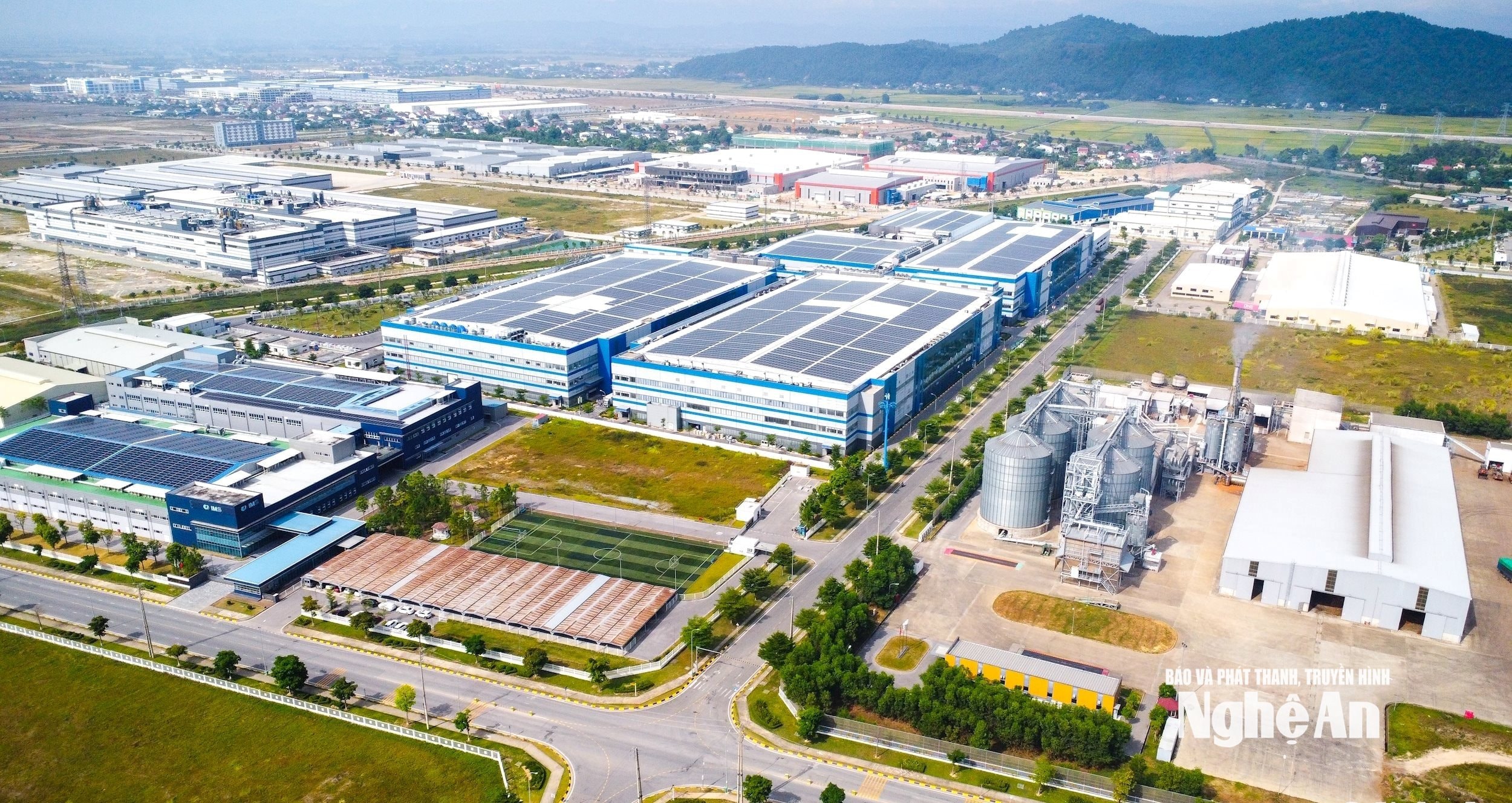
In addition to developing the Eastern economy, the problem for the 5-year period of 2025-2030 is to invest in developing the Western economy of the province. This is a large area (accounting for 83% of the province's natural area, with over 1.4 million people, including over half a million ethnic minorities). The Western region still has many untapped and undeveloped potentials such as land, tourism, minerals, etc.
To exploit and promote the economic strengths of the Western region, there needs to be scientific, synchronous, practical solutions suitable for the market economy and international integration in the direction of socialism.
First of all, it is necessary to protect the area of primeval forests, special-use forests, and upstream forests to minimize the harmful effects of natural disasters such as flash floods, landslides, and to preserve water sources and keep plants moist. Early selection and identification of key products in the direction of achieving VietGAP and 3-star certification for fruit trees, long-term industrial crops, medicinal plants, etc. to build a plan for concentrated raw material areas, attracting deep processing industry associated with domestic and foreign consumption.
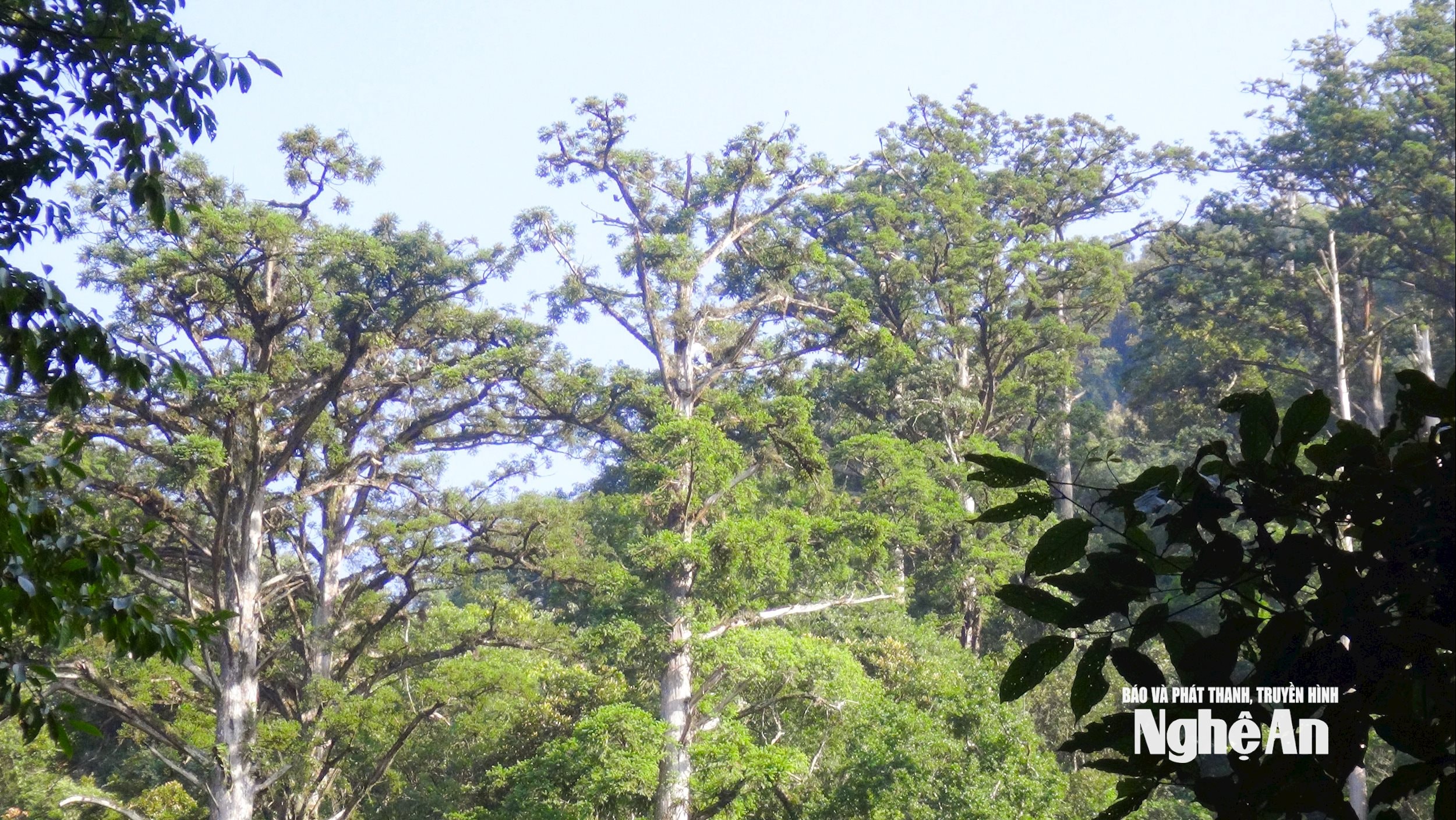
Nghe An agriculture once left its mark on the North (when the country was still at war) with vast forests of rubber, coffee, oranges... in the West (the highest year had about 10,000 hectares of rubber, 10,000 hectares of oranges, about 4,000 hectares of coffee). Vinh oranges at that time not only dominated the domestic market but also exported fresh fruit to the Soviet Union. In the following years, the rubber area decreased sharply, mainly because the tree trunks easily broke when encountering strong storms, coffee trees mainly lacked irrigation water, so intensive cultivation and productivity were difficult, orange trees were due to poor varieties, degraded soil, but mainly because of the rampant greening disease, which was difficult to prevent effectively...
Currently, the determination of fruit trees and long-term industrial trees must be based mainly on the market, scientific and technological advances (varieties, cultivation techniques, etc.), soil conditions, resistance to weather, pests and diseases, etc. At the same time, the trees must be able to develop high productivity and large output to become commodity products through deep processing.
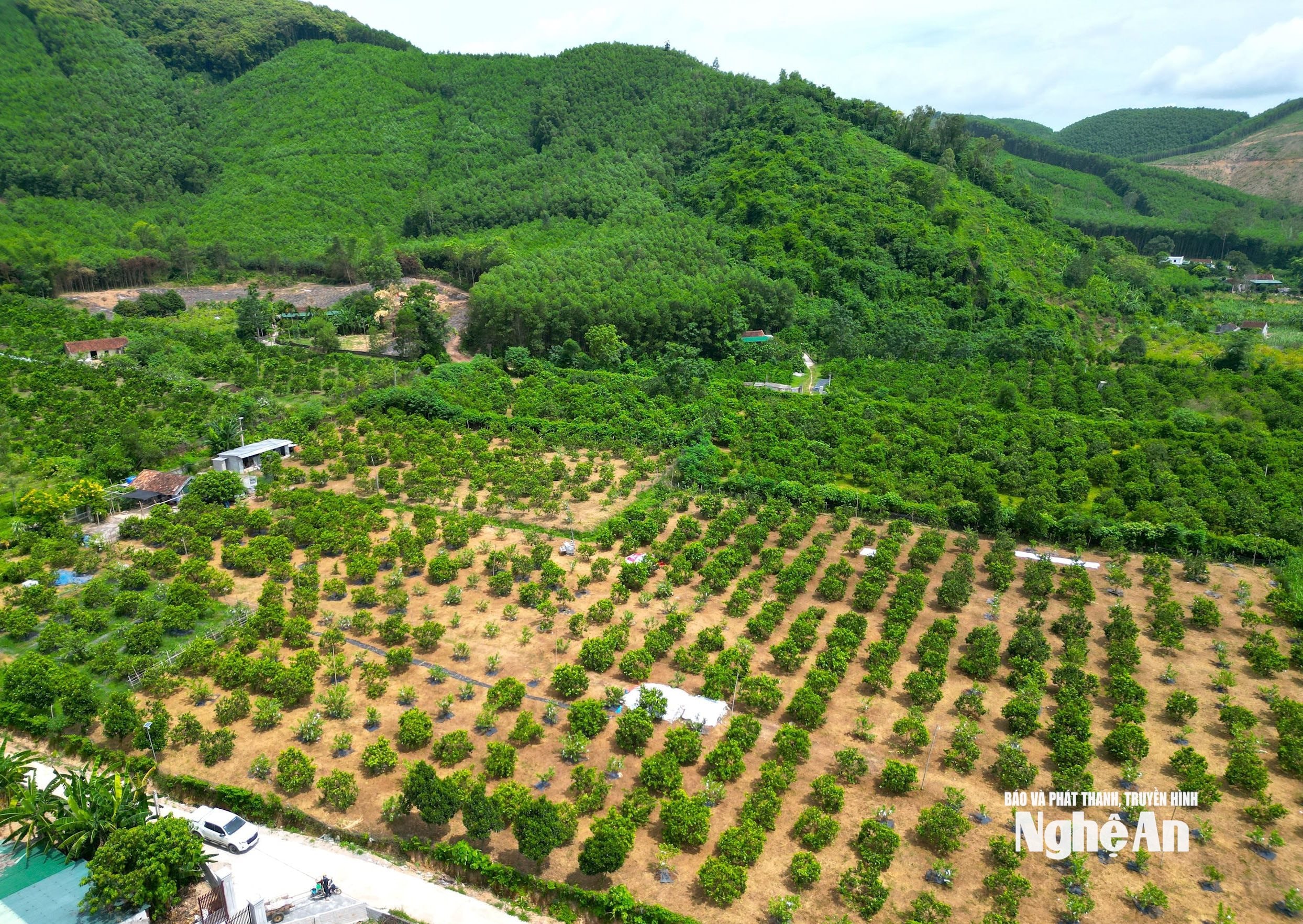
In the group of fruit trees such as oranges, grapefruits, dragon fruit, longan, lychees, etc., pineapple is the tree with the most advantages.
According to Dong Giao Food Export Joint Stock Corporation (a reputable fruit processing enterprise in Vietnam), the global pineapple market grows 5-6%/year, with large and stable consumption demand, especially for pineapple juice and canned pineapple products. Consumers increasingly prioritize natural foods, which are best for health, so pineapple has become the top choice. Pineapple trees are drought-resistant, have few pests and diseases, and are less affected by storms, making them very suitable for Nghe An's climate.
In addition to the Queen pineapple variety, there are currently Cayenne and MD2 varieties with high yield, outstanding export quality, popular in the international market and suitable for the processing industry. In particular, pineapple is a plant that can be regulated to spread out the fruiting season all year round, helping the factory have enough raw materials for continuous processing from 10-12 months/year. Pineapple is also a plant with very clear economic efficiency, each 18-month cycle, 1 hectare after deducting the cost of land preparation, seeds, materials, and labor still has a profit of about 350 million VND. In 2024, the whole country has planted 49,000 hectares, with an output of over 760,000 tons. In Nghe An, the areas of Quynh Luu, Nghia Dan, and Yen Thanh districts (formerly) have planted over 1,785 hectares, many intensive farming households have achieved quite high yields.
The pineapple growing area in Nghe An, if surveyed, planned and land funds are properly regulated, can be developed to over 20,000 hectares. The specialized pineapple growing area to supply raw materials for factories should also be concentrated in the 3 old districts above.
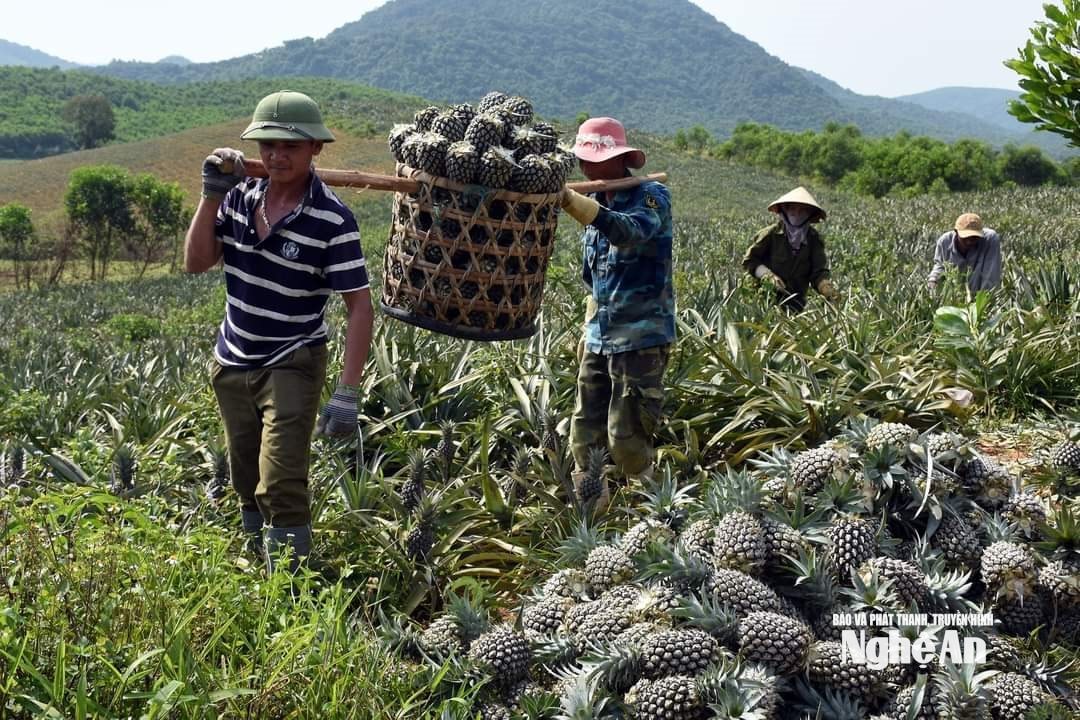
Regarding long-term industrial crops such as rubber, coffee, tea, etc., only tea should be identified as the main crop to focus on planning specialized areas with high acreage, productivity, and quality in the Anh Son and Thanh Chuong areas (formerly).
This is an area with suitable soil and climate conditions for tea trees and farmers have a long tradition of growing tea. Tea trees are drought-resistant, have few pests and diseases and are less damaged by heavy rain and storms. The tea export market is increasingly expanding in Eastern Europe, West Asia, the Middle East... In 2024, the whole province had 8,788 hectares but most of them are old tea varieties and have not been well cultivated so the yield is not high and the quality is low. Currently, there are a number of tea processing factories in the province, mainly black tea, but the capacity is small and the technology is outdated, so tea products are difficult to enter advanced countries. The area of tea growing land that can be exploited and planned is over 12,000 hectares.
Medicinal plants are plants that open up great prospects because this is a rich and diverse resource that can grow on alluvial land, land under the canopy of planted forests, natural forests and bring the highest economic value on the same unit of land area compared to other crops if there is a deep processing factory, raw material purchase and consumption. Many localities have considered medicinal plants as key crops to replace ineffective agricultural crops.
Medicinal products serve the purpose of human health care, so the demand is increasing. Some medicinal plants that can be grown are turmeric, gac fruit, cinnamon, ginseng, Solanum procumbens, wild bitter melon, Bo Chinh ginseng...
Communes in the Western Nghe An region… can exploit land funds and gradually form concentrated medicinal plant growing areas.
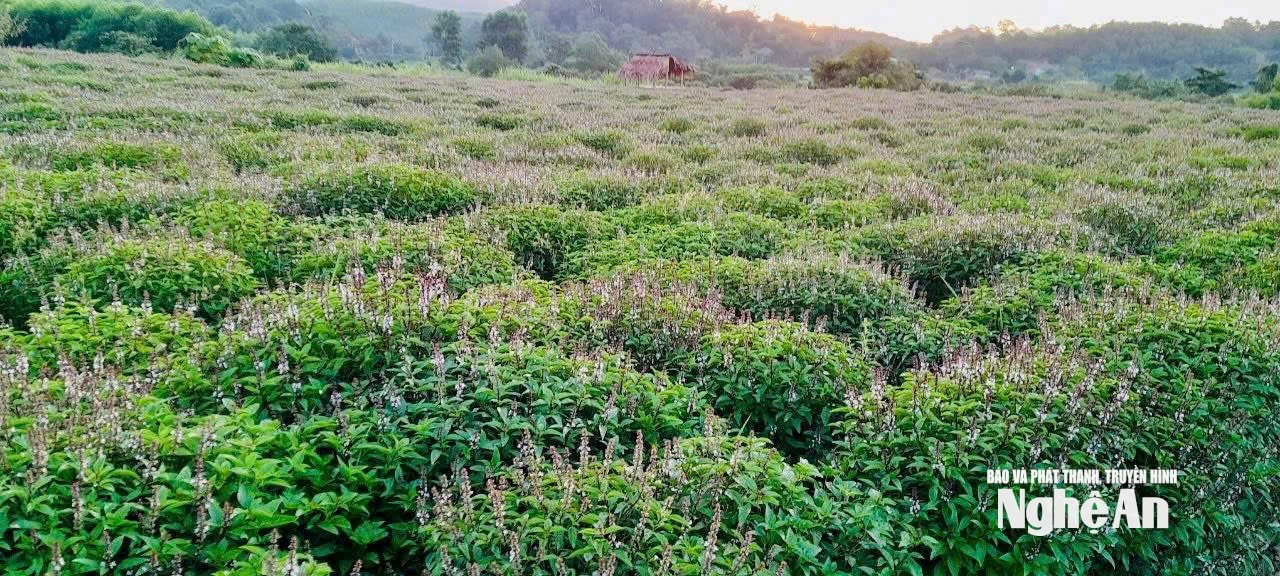
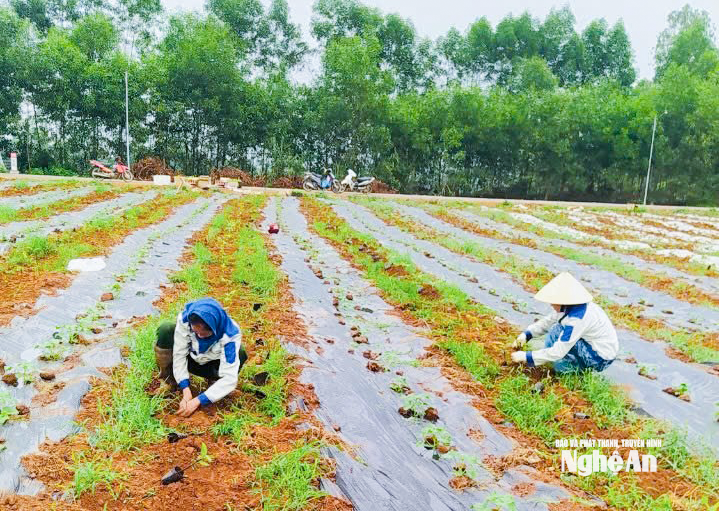
.jpg)
Along with medicinal plants, honey is a valuable product that is of interest to domestic and foreign consumers to treat a number of diseases and improve health... Beekeeping for honey has low investment costs, does not use expensive land, and exploits wild flowers, fruit trees, food crops... At the same time, it contributes to improving crop productivity thanks to higher pollination and fruit set rates compared to places where honeybee colonies are not kept... Honey will have a large output for processing factories if a large number of farmers in the West respond to invest in traditional beekeeping...
Along with agriculture, tourism in the western region of the province can develop into an important service industry if it is planned and attracts investment and exploitation businesses in the coming time.
The vast West has green mountains, blue water with primeval forests, beautiful rivers, streams, waterfalls and rich traditional cultural identities of ethnic groups such as Thai, Mong, Kho Mu, Tho... Developing types of tourism such as eco-tourism, cultural tourism, community tourism, culinary tourism... associated with planning experiential tours will attract many tourists if there are potential business investors and synchronous infrastructure.
.jpg)
In the coming years, it is necessary to plan a tourism tour connecting Pu Mat National Park (old Con Cuong) with Muong Long (old Ky Son) with the scenic complex in the old Que Phong area and Dien Lam tourist area (old Dien Chau).
Pu Mat National Park is a complex with biodiversity, waterfalls, Giang River, Lam River, especially primeval forests, a place associated with many cultural products of the Thai and Dan Lai people. Muong Long commune is an area with an altitude of about 1,500m above sea level, with a climate like Sa Pa and Da Lat associated with the Mong community. This place can be planned as a summer resort, experiencing peach blossoms, apricot blossoms, plum blossoms blooming in the spring, where there are traditional handicrafts of the Mong people. The land in the fertile valleys can develop temperate medicinal plants...
The scenic complex in the old Que Phong area, the center is the beautiful scenery of Sao Va waterfall, 7-storey waterfall, Hua Na hydroelectric lake, associated with ancient Thai villages and caves in the old Quy Chau area. This is the area where cinnamon trees are grown for the best quality and the people have the traditional profession of raising Quy ducks, famous for their delicious taste... Near the end of National Highway 48 is Dien Lam tourist area, which has been invested quite attractively by Muong Thanh Group, including a golf course, lake, 5-star hotel, diverse entertainment area,... attracting tourists.
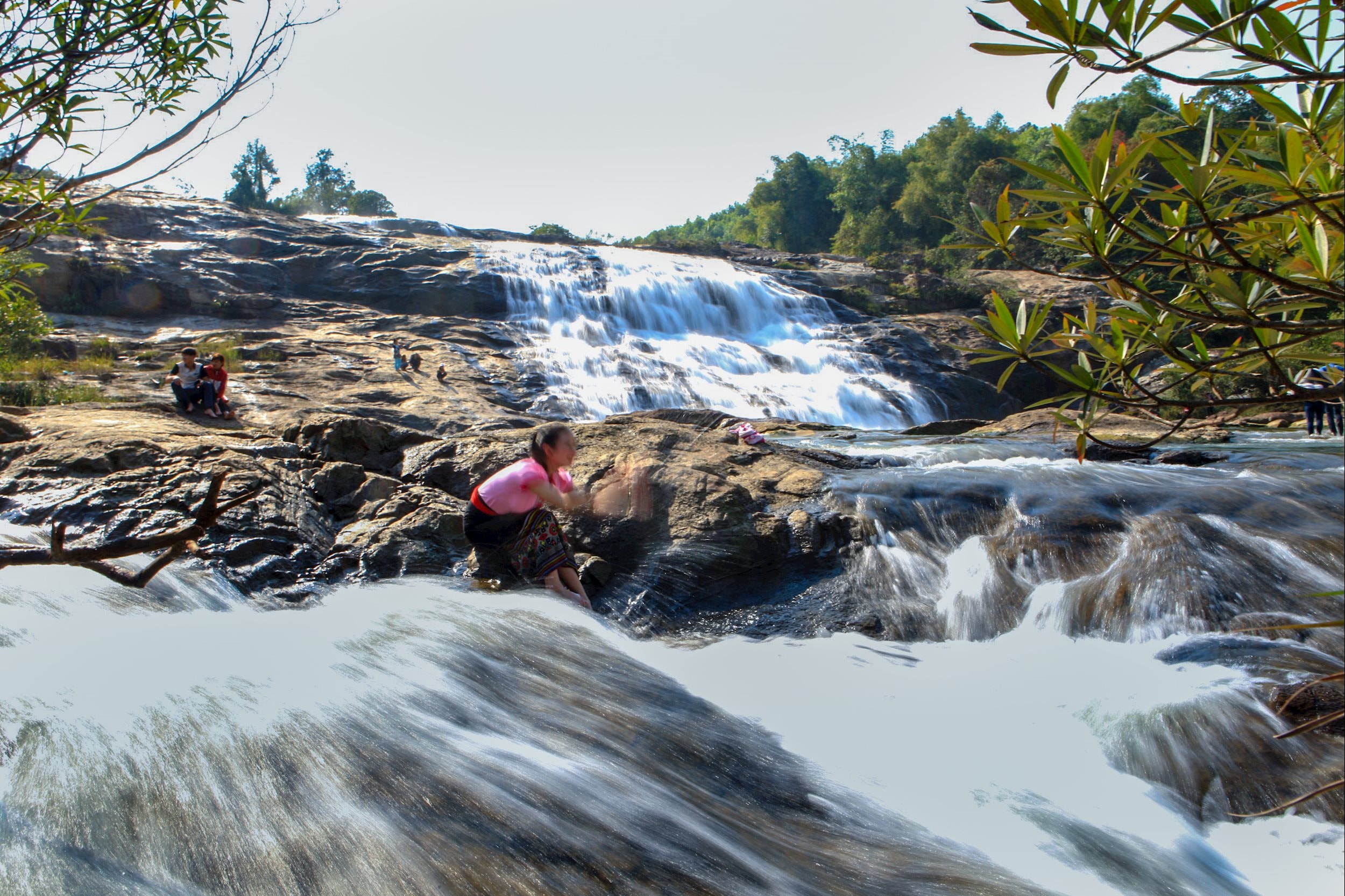
The difficult problem for authorities at all levels is directing and regulating land funds to expand the specialized cultivation area of pineapple, tea and medicinal plants.
First of all, because the locality does not have a pineapple processing factory, tea processing factory, or medicinal plant processing factory with large capacity, modern technology equipment, and the ability to purchase all raw materials for the people, people are not confident in growing raw materials even though they all know that over 1 hectare of production forest gives higher profits than other crops. Moreover, over 26,336 hectares of production forest, mainly hybrid acacia, a large part of the area is planted on alluvial land, low hills with a slope of less than 15 degrees. Although a planting cycle takes 5-7 years to harvest and only earns over 10 million VND/ha/year, but due to the lack of labor due to export and working far away, hybrid acacia is accepted. If we can mobilize to convert a part of the land planted with hybrid acacia to pineapple, tea, and medicinal plants, the efficiency on the land will be higher, contributing to solving many jobs and improving the lives of farmers.
.jpg)
Regarding industrial development in Western Nghe An, in the coming years, we must continue to create an environment and conditions to promote existing factories such as sugar factories, milk factories, TH Group's wood processing factory, Song Con and Song Lam sugar factories, etc. For the remaining white stone reserves in Quy Hop, we should only encourage businesses to process fine art stone to save raw materials and bring higher value.
To implement specific projects and plans on developing pineapple, tea, medicinal plants, honey and tourism in the West, it is necessary to effectively link the four parties: the State, businesses, scientists and farmers.
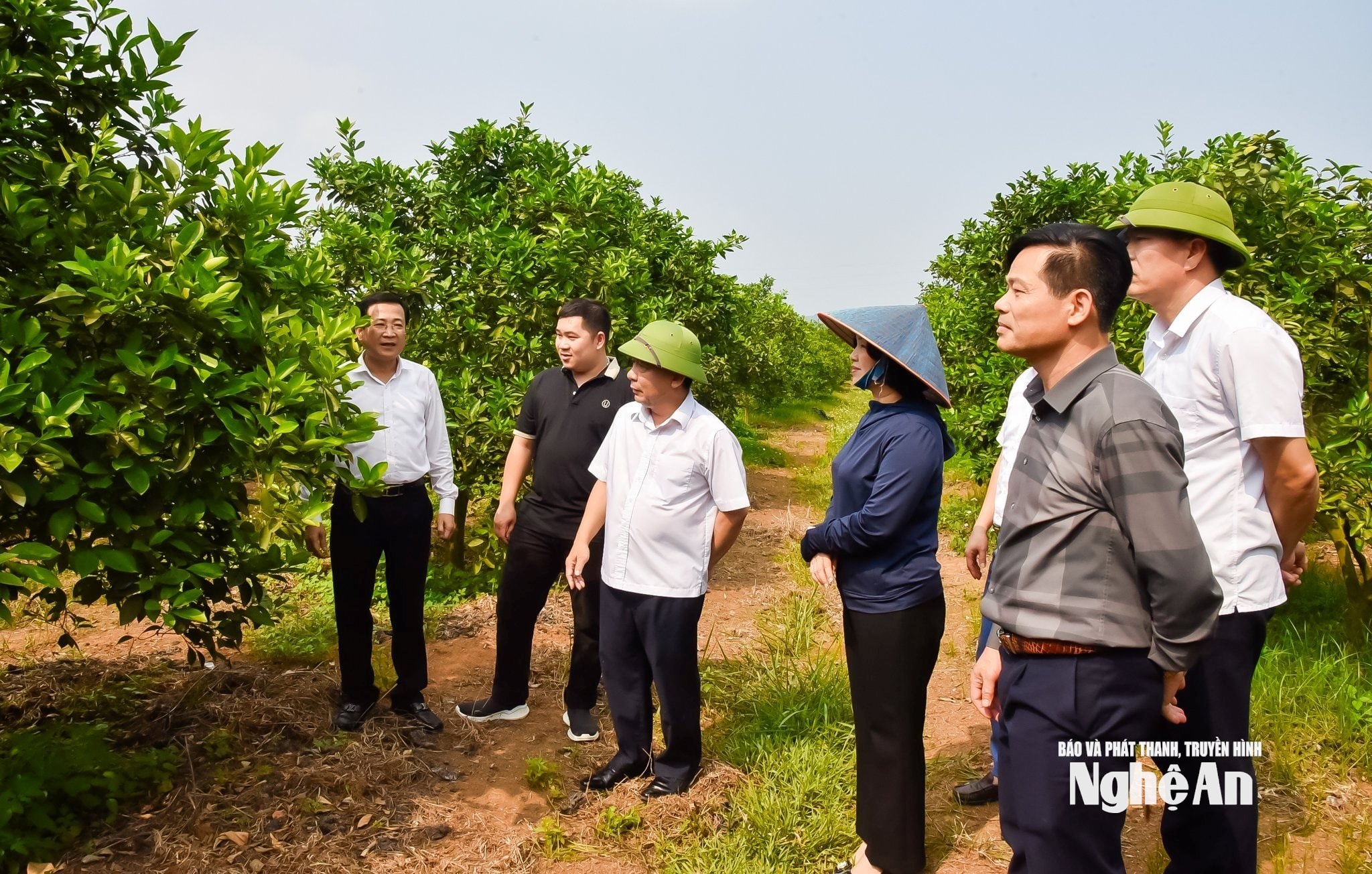
Based on the orientation of Resolution XX of the Provincial Party Congress, the government must concretize it for urgent implementation. If the economic development of the Western region is determined to be mainly pineapple, tea, medicinal plants, honey, and tourism, there must be specific mechanisms and policies to attract potential investors to build factories for deep processing of export products.
Exploiting the potential of the Western region in tourism, mainly eco-tourism. Therefore, it is necessary to invite investors with experience and management and financial capacity in this field.
At the same time, the province must continue to mobilize resources to upgrade essential infrastructure such as transportation, electricity, water, information and have policies to encourage farmers to grow new varieties with higher productivity and quality than old varieties...
For businesses, the most important thing is to have the capacity to invest in modern technological equipment, handle environmental pollution well and purchase all raw materials at reasonable prices for farmers. At the same time, coordinate with the facilities where the raw material areas are located to introduce new varieties, do a good job of agricultural extension to contribute to increasing productivity and output of plants, animals, etc.
Regarding scientists in the province and the central authorities, it is necessary to pay attention to research and transfer to farmers scientific and technical advances quickly and effectively. For farmers, it is important to be aware of escaping poverty and becoming rich legitimately through signing contracts with businesses to sell raw materials to factories. Sharing difficulties with businesses investing in agriculture is often high risk, slow capital recovery and if a factory is built without raw materials, it will lead to losses, even bankruptcy...
Economic development in the Western region of the province still faces many difficulties, but with the high political determination of the entire political system, of each cadre, party member and people, we believe that in the next 5 years there will be many new achievements and new results.



